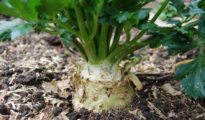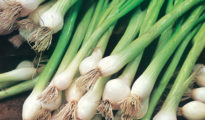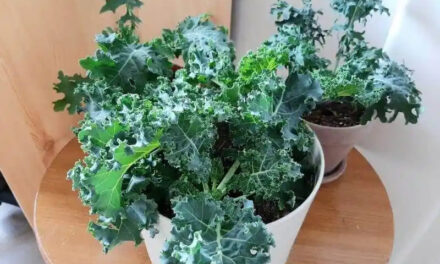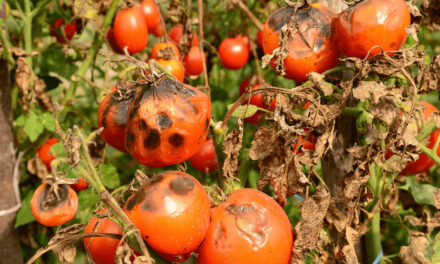Fiddlehead ferns, also known as Ostrich ferns, are a popular vegetable that is enjoyed around the world. These ferns are known for their unique appearance and delicate, yet delicious flavor. They are also highly nutritious, making them a popular choice for those who are health-conscious. In this blog post, we will discuss how to grow fiddlehead ferns in your garden or in containers, so that you can enjoy these delicious vegetables at home.
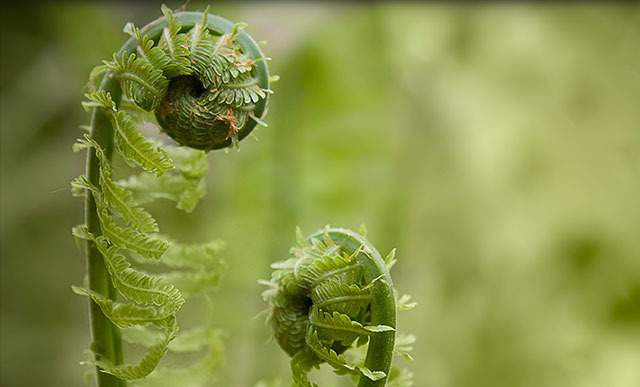
Choosing the Right Location
The first step in growing fiddlehead ferns is to choose the right location. These ferns thrive in areas that are moist and shaded, so you will need to select an area in your garden that meets these requirements. It is also important to choose an area that is protected from strong winds, as the delicate fronds of the ferns can easily be damaged by strong gusts.
Preparing the Soil
Once you have chosen the right location, the next step is to prepare the soil. Fiddlehead ferns prefer soil that is rich in organic matter and has a slightly acidic pH level. You can improve the soil in your chosen location by adding compost, leaf mold, or other organic matter. You may also need to adjust the pH level of the soil by adding sulfur or lime, depending on the results of a soil test.
Planting Fiddlehead Ferns
Fiddlehead ferns can be planted in the spring or fall. If you are planting in the spring, you will want to wait until the soil has warmed up and is no longer frozen. If you are planting in the fall, you will want to do so at least six weeks before the first frost. To plant fiddlehead ferns, you will need to dig a hole that is approximately twice the size of the root ball. Make sure that the hole is deep enough so that the top of the root ball is level with the soil surface. Once you have planted the fern, make sure to water it thoroughly.
Caring for Fiddlehead Ferns
Fiddlehead ferns require regular watering to thrive. You should water your ferns deeply once or twice a week, depending on the weather conditions. During periods of hot, dry weather, you may need to water more frequently. ertilizing is also important for the health of your fiddlehead ferns. You can fertilize your ferns with a balanced, slow-release fertilizer in the spring and again in mid-summer. Be sure to follow the instructions on the fertilizer package, as over-fertilizing can be harmful to the ferns.
Pest and Disease Control
Fiddlehead ferns are generally free from pests and diseases, but there are a few things to watch out for. Slugs and snails can be a problem, especially in damp conditions. To control these pests, you can use a slug and snail bait or set up beer traps around your ferns. Another potential problem is rust, a fungal disease that can cause brown spots on the ferns. To control rust, make sure to remove any infected fronds and dispose of them away from your ferns. You can also use a fungicide if the problem persists.
Harvesting Fiddlehead Ferns
Fiddlehead ferns are ready to harvest when the fronds are about 4-6 inches tall and tightly curled. You should harvest the ferns as soon as possible after they emerge, as they will quickly unfurl and become inedible. To harvest, simply snap off the frond where it meets the stem. You can continue to harvest fiddlehead ferns for several weeks, as new fronds will continue to emerge. However, be careful not to over-harvest your ferns, as this can weaken the plant and reduce future yields.
How to Use Fiddlehead Ferns
Fiddlehead ferns are a versatile vegetable that can be used in a variety of dishes. Here are some ways to use fiddlehead ferns:
- Sauteed: One of the simplest ways to prepare fiddlehead ferns is to saute them in a pan with a little butter or oil. This brings out their delicate flavor and texture, and makes them a delicious side dish or addition to stir-fries.
- Salad: Fiddlehead ferns can also be used in salads, adding a unique texture and flavor to your greens. Simply blanch the ferns for a few minutes, then toss them with your favorite salad ingredients and dressing.
- Soup: Fiddlehead ferns make a great addition to soups, especially creamy soups like potato or mushroom. Simply add the ferns to the soup and simmer until tender.
- Stir-Fry: Fiddlehead ferns can also be used in stir-fries, adding a unique texture and flavor to your favorite dishes. Simply stir-fry the ferns with your other ingredients and sauce.
- Pickled: Fiddlehead ferns can also be pickled, preserving their unique flavor and texture for longer storage. To pickle fiddlehead ferns, simply blanch them for a few minutes, then pack them into jars with vinegar, spices, and salt.
- Grilled: Fiddlehead ferns can also be grilled, adding a smoky flavor to their delicate taste. Simply brush them with oil or butter and grill until tender.
Overall, fiddlehead ferns are a delicious and nutritious vegetable that can be used in a variety of dishes. Try them in your favorite recipes and experiment with new ways to enjoy them!
The History of Fiddlehead Ferns
Fiddlehead ferns have a long and interesting history, dating back thousands of years. Here is a brief overview of the history of fiddlehead ferns:
- Native American Use: Fiddlehead ferns were a staple food of many Native American tribes, including the Ojibwe, Iroquois, and Mi'kmaq. The ferns were often harvested in the spring and eaten fresh or preserved for later use.
- European Discovery: Fiddlehead ferns were introduced to Europe by early explorers and traders, and soon became a popular vegetable in many European countries. They were especially popular in France and Italy, where they were considered a delicacy.
- Colonial America: Fiddlehead ferns were brought to North America by early European settlers, who continued to use them as a food source. They were especially popular in New England, where they were harvested in the spring and eaten fresh or pickled for later use.
- Modern Use: Fiddlehead ferns continue to be popular today, especially in areas where they are native or have been introduced. They are considered a seasonal delicacy and are often featured on the menus of upscale restaurants.
In addition to their culinary use, fiddlehead ferns have also been used for medicinal purposes. Some Native American tribes used the ferns to treat a variety of ailments, including fever and stomach problems. Modern research has also shown that fiddlehead ferns are a good source of antioxidants and other beneficial compounds.
Overall, fiddlehead ferns have a rich and varied history, and continue to be a popular and nutritious food today. Whether eaten fresh or preserved, they are a delicious and unique addition to any meal.


